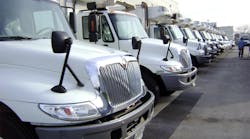In a recent blog, I talked about what makes an organization resilient and agile. Resiliency and agility are becoming more and more important as the pace of change in the trucking industry continues to accelerate.
It can seem like a daunting task to transform your organization from where it is today to one that is nimble. Fortunately, there is a model that can help you make the transition. Speaking at a recent NationaLease meeting, Lynnda Nelson, president of ICOR, talked about the organizational resilience model that is based on ISO 22316.
The three main components of the model are:
- Leadership and strategy — Leaders have an understanding of the purpose, vision and values of the organization as well as an understanding of the organization’s internal and external environments. Effective leaders are trusted and respected, and leadership is distributed throughout the organization.
- Culture and behaviors — Core values and behaviors support the health and welfare of employees, foster creativity, and empower employees to communicate effectively. Information and knowledge are shared to enable decision making. Performance is continually monitored, and continuous improvement is encouraged.
- Preparedness and managing risk—There are adequate resources available to allow the organization to adapt to changing circumstances. Risk is managed throughout the organization and silos are eliminated. The organization is set up to anticipate, plan and respond to changing circumstances.
In order for an organization to be resilient, its leadership needs to be strong. The organization intentionally seeks leaders who will act with integrity, can adapt to change, and have a diverse set of skills. These leaders provide direction as part of all decision making while also seeking innovate ideas and solutions from others.
Leaders of resilient organizations share lessons learned to promote better practices across the organization. They understand the regulatory environment, and they monitor and evaluate the activities of competitors in order to help manage change.
Leaders strengthen relationships and foster both collaboration and cooperation.
When it comes to building a culture that ensures healthy behavior, resilient organizations are based on trust, loyalty and respect. Employees are engaged and empowered, creativity and innovation are fostered, and there is regular and open communication. In addition, knowledge is shared, and the organization is committed to improving.
Finally, resilient organizations have to strengthen systems to effectively manage risk. This includes looking at things like business continuity, crisis management, incident response, cybersecurity, supply chain management, information technology, and managing change.
By focusing on these three key components, you can turn your organization into a resilient one that will then be described as adaptive, creative, prepared, innovative, inclusive, effective, and resourceful.



